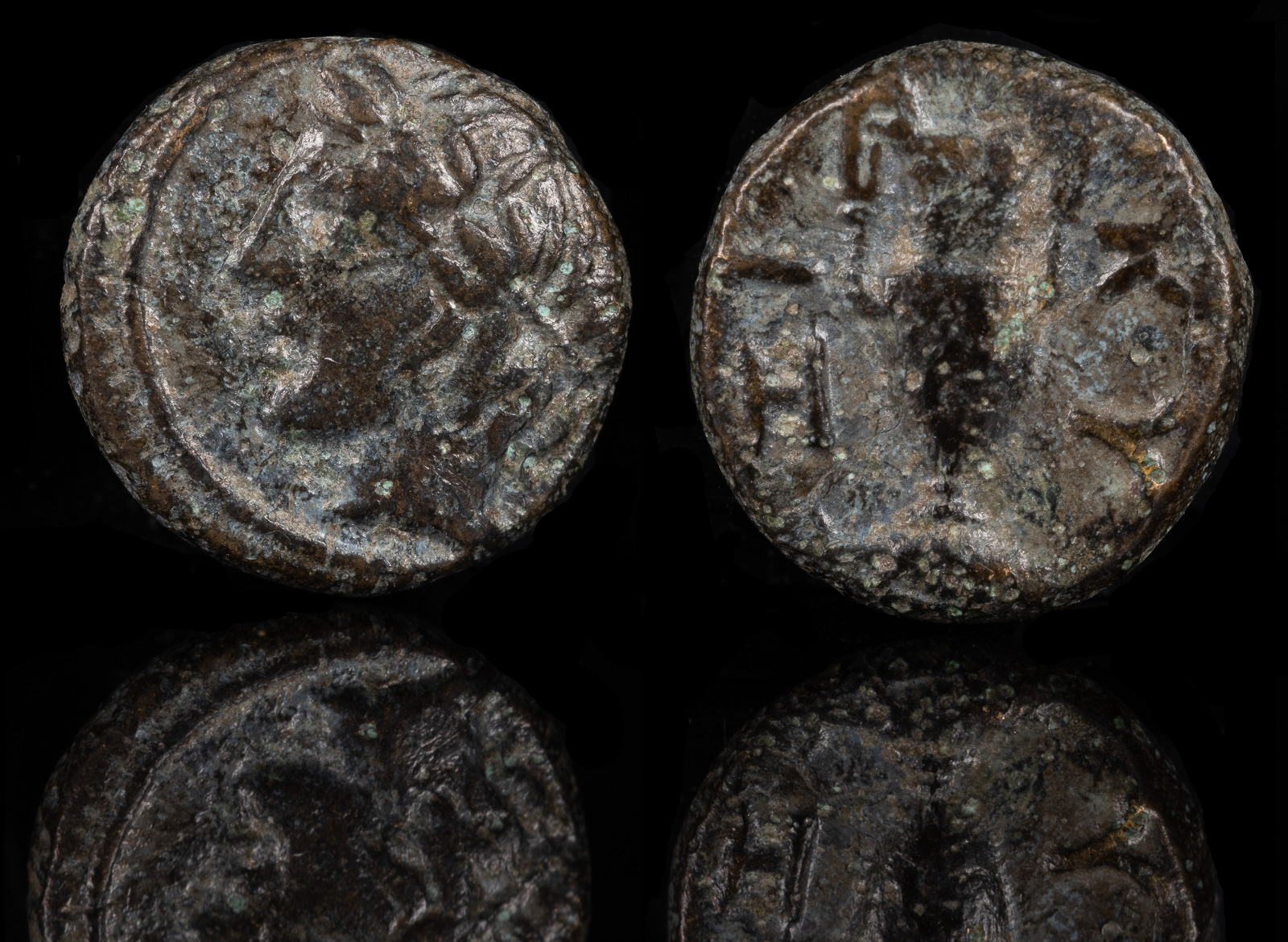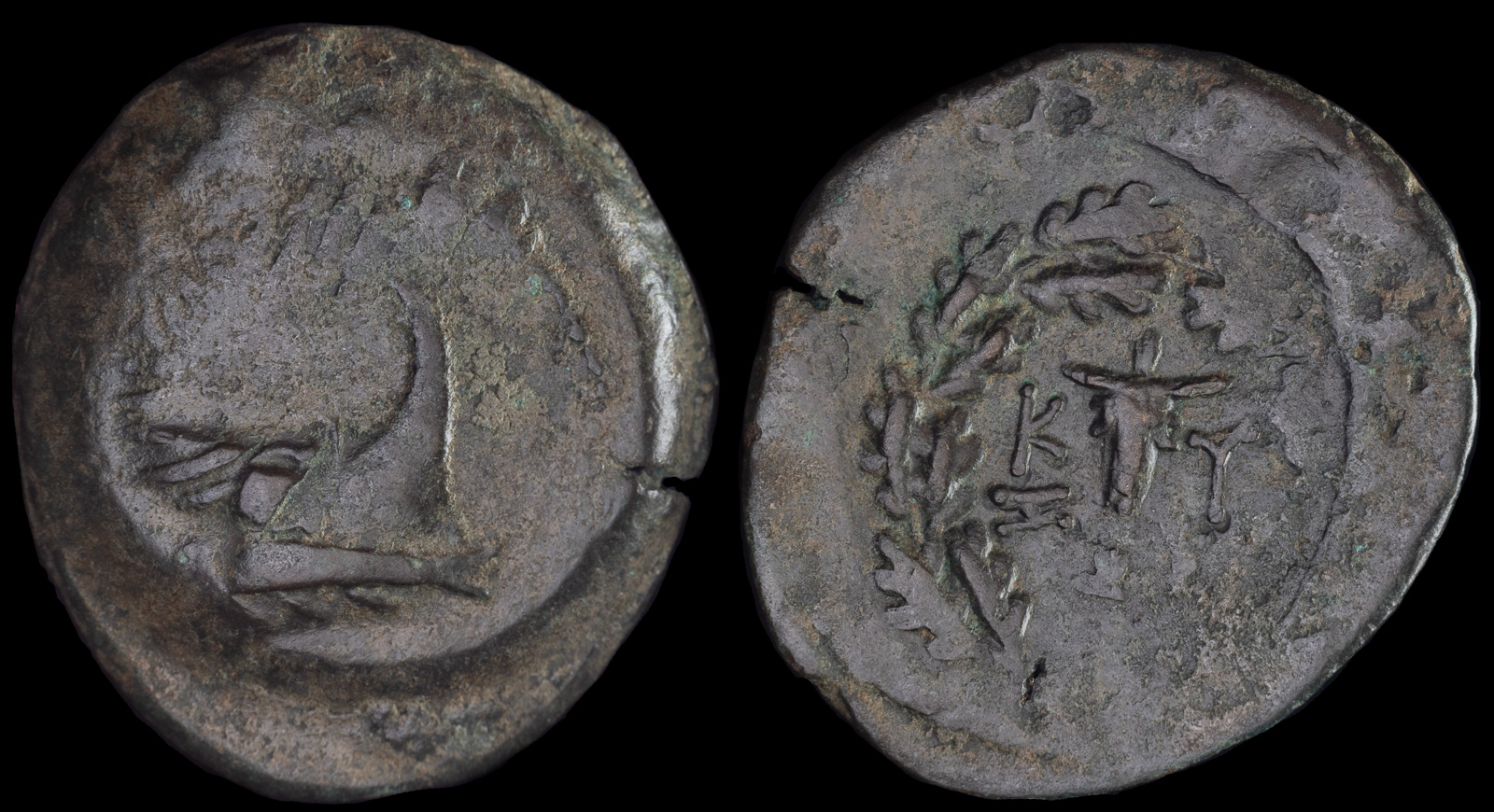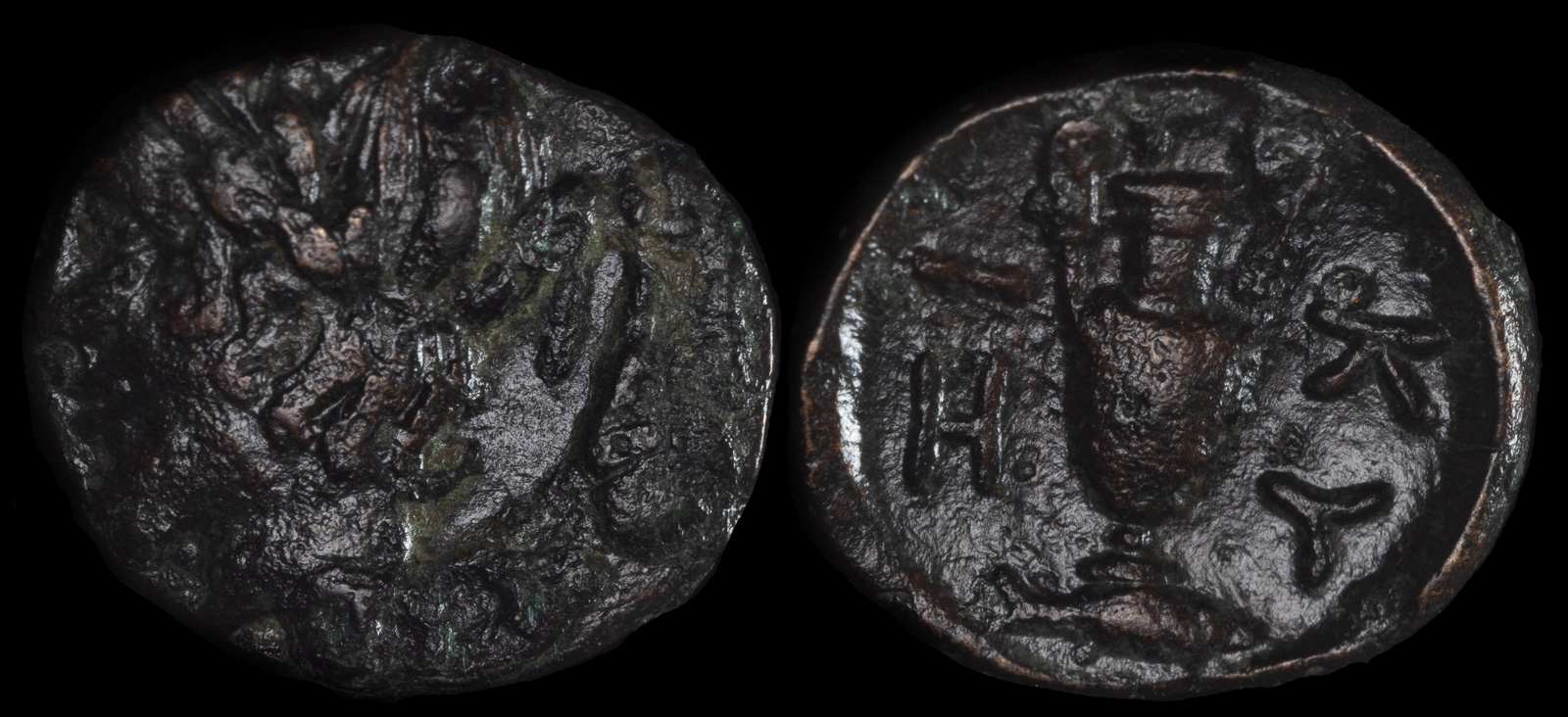
c. 4th century BCE
Æ 8mm, 0.88g, 9h
Laureate head of Apollo l.
R/ Amphora; below, tunny r.
Von Fritze III 2; SNG BnF 411; SNG Copenhagen 57
Kyzikos was famous numismatically for creating its electrum staters in the archaic era. These can be very pricy, so I don’t have one, though I do have this nice bronze coin.
According to mythology, Kyzikos was founded during the coming of the argonauts, though archeologists believe it more likely that it was settlers from Thessaly. Later, more settlers from Miletos joined them.

circa 300-200 BCE
Overstruck on an earlier issue from Kyzikos (SNG Paris 436)
Æ 31mm, 15,82g
Prow to right /
Bucranium; K-Y/Z-I across fields; all within oak wreath
Von Fritze III, 11; SNG BnF 438; SNG von Aulock 1231
The famed philosopher Eudoxos of Knidos, who was a student of Plato, established a school in Kyzikos. He was responsible for much of the mathematics of concentric spheres, and was among the first to establish the trajectories of the planets. He also made other contributions to mathematics and is today honored by craters on the moon and Mars along with an algebraic curve.

circa 350-300 BCE
Æ 10mm, 0,69g
Laureate head of Apollo left /
KY-Z (like H) I Amphora; tunny below
Von Fritze, Nomisma X, Kyzikos, Gruppe I-2, Tafel I-3; SNG Copenhagen 57
The city swayed between Spartan and Athenian dominance until it came under the possession of the Persians. In 334 BCE, Alexander the Great liberated it and connected it to the mainland. Some time after his death, Kyzikos came under the dominion of the Attalids of Pergamon, where it remained until Roman times.

circa 300-200 BCE
Æ 11mm, 1,16g
Obv: Head of Kore Soteira right.
Rev: KY – ZI, Tripod.
Nomisma X 1; SNG BN 43
I’m uncertain whether this coin comes from Kyzikos. It bears resamblance to their types, though the ethnic is a poor match.

circa 300-100 BCE
Æ 20mm, 6,24g
Laureate head of Kore-Soteira to right /
B between KY-ΣI above and below; all within wreath
Von Fritze III